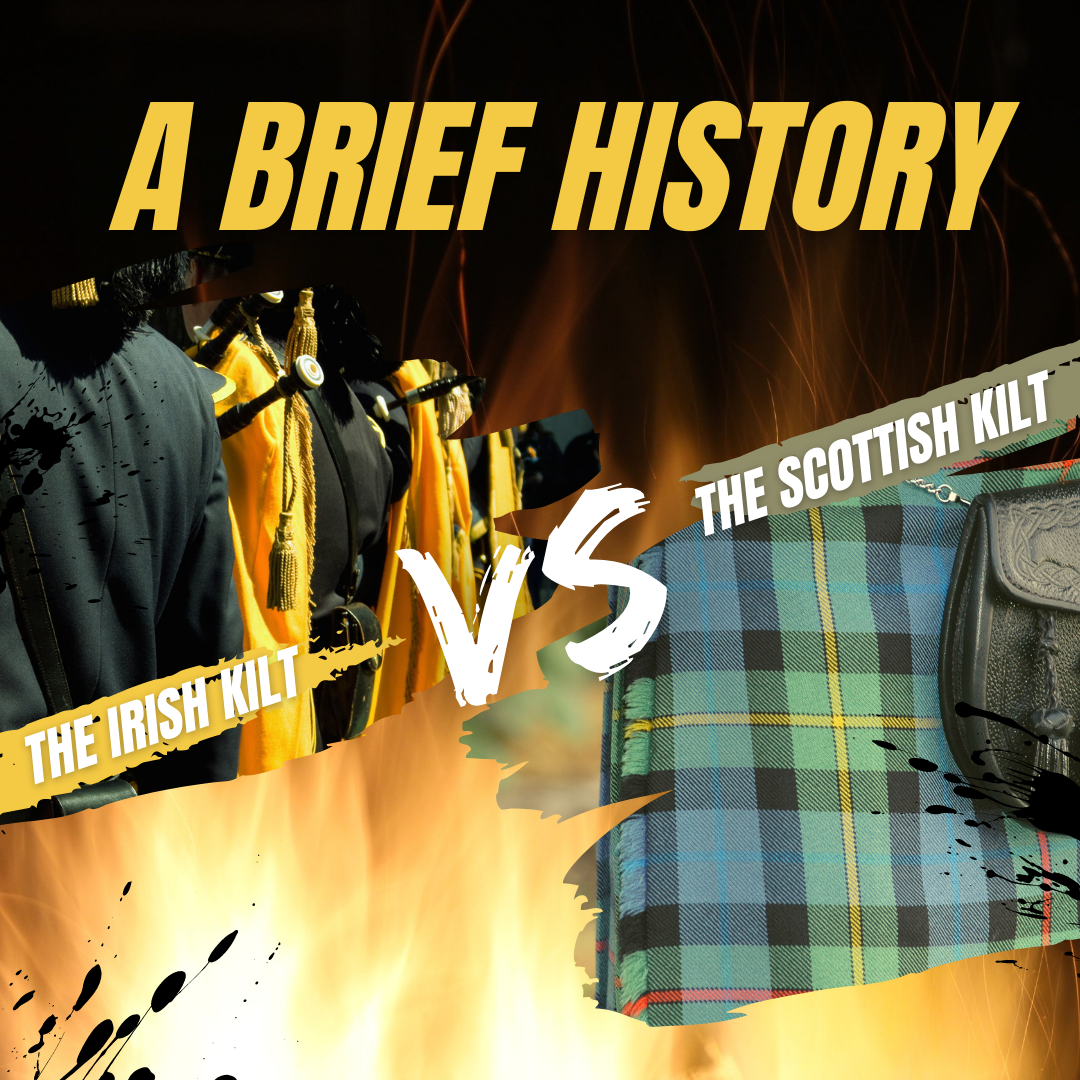What are The Differences between Scottish and Irish Kilts?

When thinking of Kilts, imagery of the Scottish Highlands and traditions come to mind. However, the Irish have their own culture that includes a long history of kilts, and the two often wrongfully overlap. Irish kilts are often less noted in the mainstream, so we're here to set you straight – what are the differences between Scottish and Irish kilts?
An Introduction to the Irish Kilt
The Irish kilt is traced back to the middle ages and was initially known as 'Lein-croichs'. The Irish kilt was born from the rebellion of the English invasion and became a symbol of pride for Irish heritage. The Irish kilt was originally a mustard colour, known as 'the saffron kilt'. The garment developed into being a tartan style; however, the original is still used today. The traditional Irish kilt is often accompanied by the Shamrock symbol within the pleats of the kilt, and tartans tend to represent Irish districts and counties. Irish kilts had a massive increase in popularity in the 19th century and into the 20th century due to the "Gaelic Revival". As an act of rebellion against the English, a national movement revived the Gaelic language in Ireland and Gaelic culture, including the kilt.

The Scottish Kilt
The Scottish Kilt's history is more well known, perhaps because of its more prolonged use throughout history. Originating from the 16th century, the Scottish kilt wasn't worn as a symbol of rebellion. The Scottish kilt was worn as an everyday garment for over 300 years until the English (again) intervened in the 1700s and declared the kilt illegal due to Jacobite soldiers wearing them in battle. The Scottish kilt was banned for 35 years, and by the time it was dropped, it had died out of everyday fashion. However, the kilt to this day is commonly ceremonially worn and is a colossal symbol of patriotism. You can read more about the kilt ban in our previous article here.

So what are the differences?
Crests
As with most differences with the Scottish vs Irish kilt, the main differences come down to the link to family's clans vs overall national representation. Scottish kilts have been around longer and are historically linked back to clans in the highlands; they are usually decorated in family crests or the crest related to the tartan used to make the kilt. Traditionally at Scottish weddings, the groom will be given his wife's family crest to put on his kilt to represent the acceptance of the new family.
Irish kilts, however, are usually decorated with only the shamrock crest within the pleats of the kilt, representing the whole of Ireland. This is due to the kilt being born out of patriotism for the whole country rather than having links to specific clans or families.
Jackets
One of the most visible differences between the two nations' kilts is how the jackets are worn with the kilts. The Scottish kilt is traditionally paired with a Prince Charlie jacket, while the Irish kilt is paired with a Brian Boru jacket. Have a look at the jackets we sell here.
Sporrans
Sporrans are a decorative accessory to the kilt, and the way the Scottish and Irish wear them is a significant factor in identifying the two. Sporrans are worn around the waist and lie on the front of the kilt, described as 'a big pocket' in simple terms, used for kilt wearers to store their belongings. As with most features, the Scottish sporran will usually be paired with a specific family crest, while the Irish will be decorated with a general shamrock or Celtic symbol. Have a look at the variety of sporrans we sell here.
While similar, Scottish and Irish kilts have massively different histories and symbolic significance. While one was born out of a revolution against invasion, the other survived one with hundreds of years of the previous history. Next time you're at a wedding or a piping band walks past, have a closer look at the details of the kilts and impress your friends with your new cultural identification skills!

 Check out our Yotpo Reviews
Check out our Yotpo Reviews